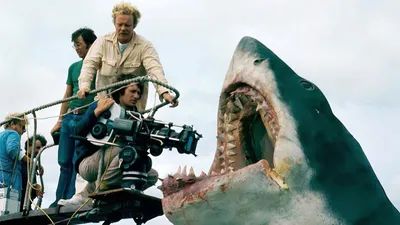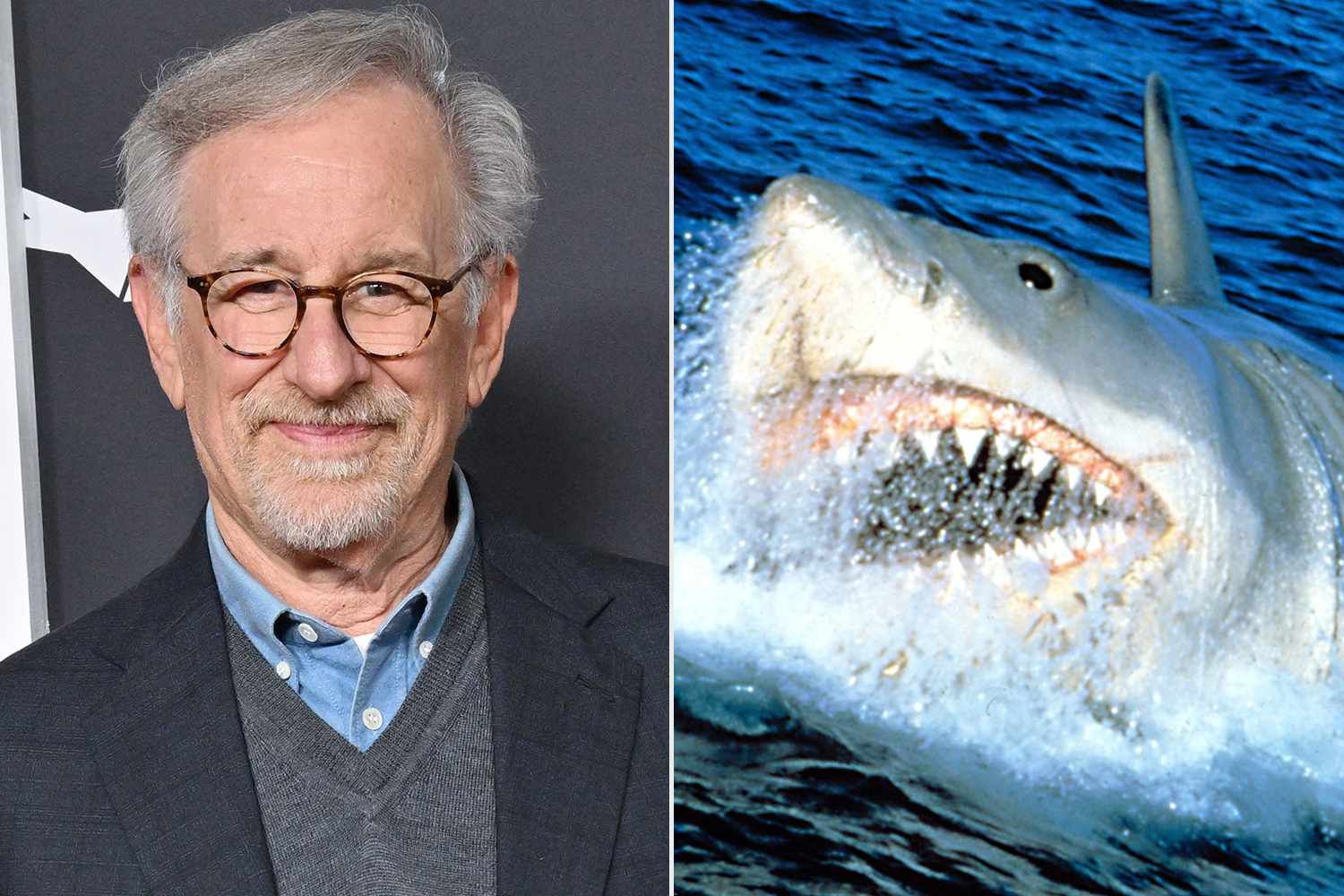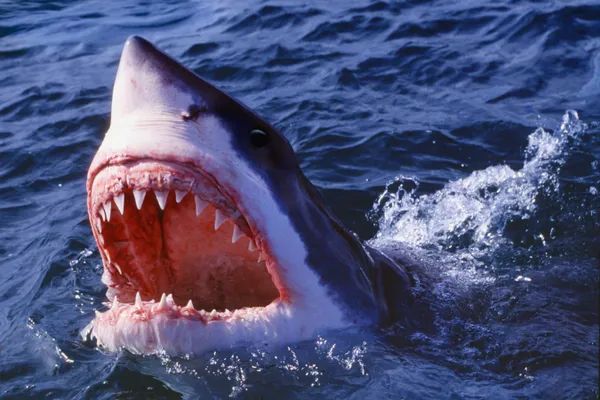Title: “The Monster Beneath the Waves: How ‘Jaws’ Terrified the World and Changed Hollywood Forever”
When Jaws hit theaters in 1975, audiences had no idea they were about to witness a revolution in cinema. Directed by a then 27-year-old Steven Spielberg, this American suspense-horror film didn’t just send moviegoers screaming from the water — it reshaped the entire film industry. Based on Peter Benchley’s 1974 novel of the same name, Jaws told the harrowing story of a great white shark that terrorizes a peaceful coastal resort town. What began as a terrifying tale of survival turned into the birth of the first true summer blockbuster — a film that broke records, created hysteria, and forever changed the way movies were made and marketed.
The story unfolds on the fictional Amity Island, a sleepy beach town preparing for its busy summer season. The peace is shattered when a young woman is savagely attacked during a midnight swim. The town’s newly appointed police chief, Martin Brody (played by Roy Scheider), immediately orders the beaches closed to protect the public. However, his decision clashes with Mayor Vaughn (Murray Hamilton), who fears losing the tourism dollars that keep the island alive. Bowing to pressure, the coroner changes the cause of death to a “boating accident,” and the beaches are reopened — a decision that soon proves fatal.
When another swimmer is killed, panic grips the town. Local fishermen rally to hunt the killer, and when they capture a shark, the town breathes a sigh of relief. But their victory is short-lived. Matt Hooper (Richard Dreyfuss), a young and intelligent oceanographer brought in to investigate, reveals the grim truth — the captured shark isn’t the one responsible. The real killer is still out there, and it’s far more dangerous: a massive great white shark, “a perfect engine — an eating machine,” as Hooper chillingly describes it. Despite his warnings, the mayor insists the beaches stay open for the crucial Fourth of July weekend.
The decision leads to another brutal attack, and this time, there’s no denying the danger. The mayor finally agrees to hire the town’s only hope: Quint (Robert Shaw), a grizzled, eccentric shark hunter with a haunted past. The second half of the movie follows Quint, Brody, and Hooper as they embark on a perilous hunt across open waters, leading to one of cinema’s most unforgettable climaxes — a man, a shark, and the ultimate battle between human will and nature’s fury.
Spielberg’s path to cinematic history was far from smooth. Jaws was only his second feature-length film after The Sugarland Express (1974), and it quickly spiraled over budget and schedule. The young director insisted on filming in the open ocean rather than using a controlled tank, leading to endless delays, malfunctioning equipment, and rising tensions among the cast and crew. The movie was primarily shot around Martha’s Vineyard, Massachusetts — marking the first major motion picture filmed extensively at sea.
Adding to Spielberg’s woes was the infamous mechanical shark, which constantly broke down. Faced with this technical nightmare, Spielberg turned to creativity to build suspense. Instead of showing the shark, he hinted at its presence through the reactions of terrified swimmers and, most memorably, through music. Composer John Williams delivered one of cinema’s most chilling scores — a haunting, two-note theme that signaled the shark’s approach and became an instant classic. Few musical cues have ever evoked such universal dread.
When the film was finally completed, Universal Pictures launched an unprecedented marketing campaign. In a bold move, Jaws was advertised heavily on television — a strategy few studios had dared attempt at the time due to high costs. The studio also released the film simultaneously in over 400 theaters nationwide, an unheard-of tactic for the era. Before Jaws, films typically opened in select cities and expanded gradually. Spielberg’s ocean thriller changed that forever. Suddenly, summer was no longer a dead season for movies — it was the season for cinematic spectacles.
The gamble paid off spectacularly. Within 60 days, Jaws raked in more than $100 million, smashing previous box office records held by The Godfather (1972) and The Exorcist (1973). Audiences couldn’t get enough, even as many swore off swimming for years. Critics were divided at first, but major reviewers like Roger Ebert praised its strong characters, gripping tension, and restrained use of gore. “It has the necessary amount of blood and guts to work—but none extra,” Ebert wrote, highlighting Spielberg’s mastery of suggestion over shock.
The film’s legacy is immortal. Its iconic dialogue — especially Brody’s warning, “You’re gonna need a bigger boat” — and Quint’s eerie monologue about surviving the USS Indianapolis have become ingrained in pop culture. Decades later, Jaws still stands as the gold standard of suspense filmmaking. It turned Steven Spielberg into a household name, created the summer blockbuster phenomenon, and left the world forever wary of what lurks beneath the waves.
In the end, Jaws was more than a movie — it was a cultural event that transformed fear into art and made everyone think twice before going for a swim.




